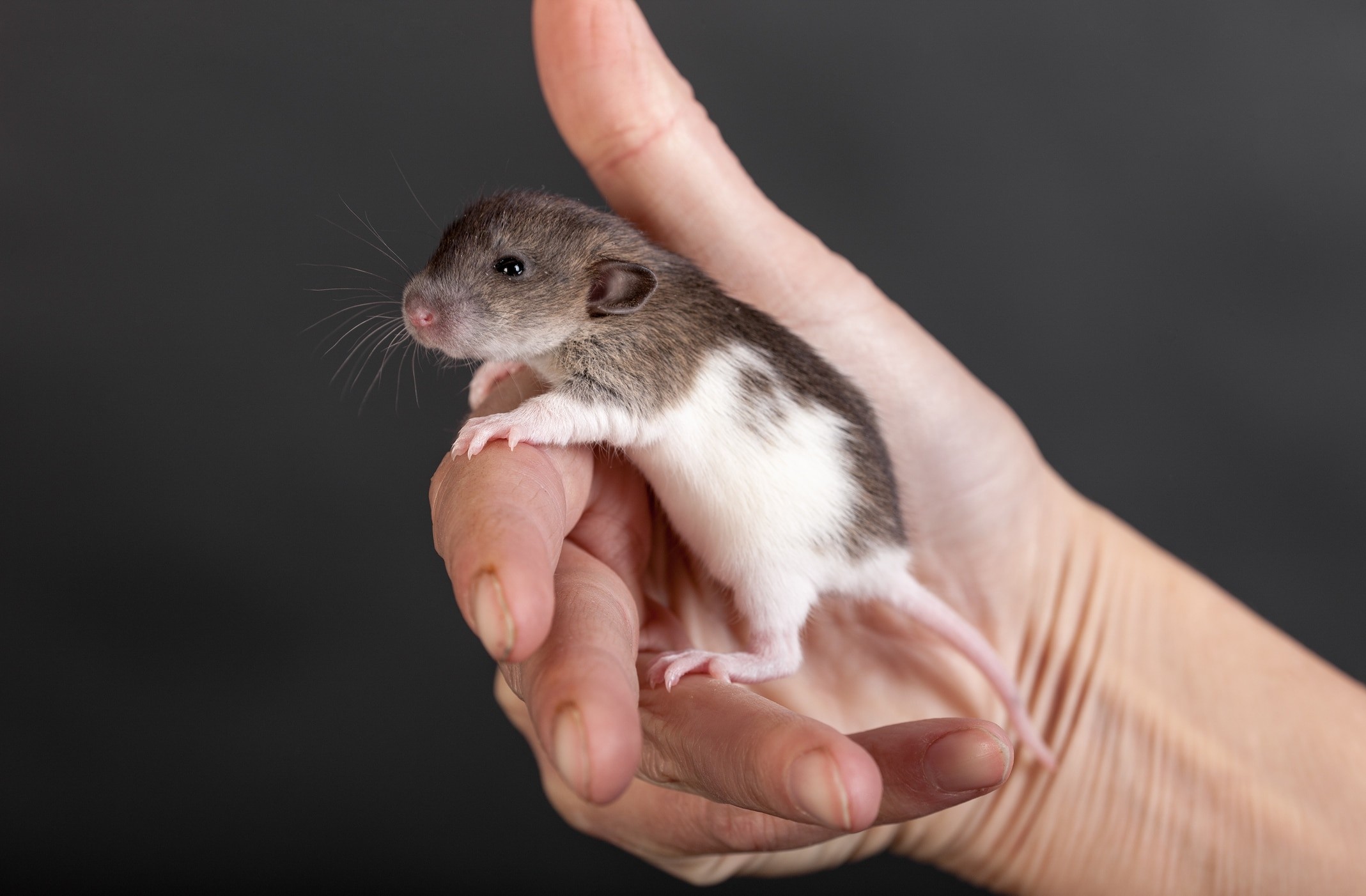Pet rats, often called fancy rats, are cherished for their intelligence, sociability, and ease of care, making them wonderful pets for many. If you’re considering welcoming these charming rodents into your home, understanding their lifespan is crucial. While the relatively short Pet Rat Life Expectancy can be a deciding factor for some, knowing how to maximize their time with you ensures a fulfilling companionship.
Understanding the Typical Lifespan of Pet Rats
Generally, the average pet rat life expectancy ranges from 2 to 4 years. This is considerably shorter than some other small pets like rabbits or ferrets, which can live for a decade or more. However, this shorter lifespan can also be seen as a benefit for individuals or families who desire the joys of pet ownership without a long-term commitment. Interestingly, the record for the oldest rat ever documented reached an impressive 7 years!
Rats reach sexual maturity quite quickly, usually between 37 and 75 days old. Distinguishing between male and female rats is possible from around 3-4 weeks of age. Female rats often mature slightly earlier and are sometimes observed to live marginally longer than males.
Alt text: Adorable baby rat with pink ears and tiny whiskers, showcasing the youthful charm of these pets.
Wild Rat Lifespan vs. Pet Rat Lifespan: Why the Difference?
The pet rat life expectancy significantly surpasses that of their wild counterparts. Wild rats typically survive for less than a year. This stark contrast is primarily due to the harsh realities of living in the wild, which include:
- Predation: Wild rats are vulnerable to numerous predators, drastically shortening their lifespan.
- Disease: Without access to veterinary care, wild rats are susceptible to diseases and infections that can be fatal.
- Food and Water Scarcity: Finding consistent and adequate food and water sources is a constant struggle in the wild.
- Lack of Veterinary Care: Wild rats do not receive medical attention, leaving injuries and illnesses untreated.
Exploring the Lifespan of Different Pet Rat Breeds
While the average pet rat life expectancy remains in the 2-4 year range, certain rat varieties may face unique predispositions that could influence their longevity.
- Hairless Rats: These unique rats, lacking fur, are unfortunately more susceptible to health complications. This often translates to a potentially shorter lifespan compared to other breeds. Their lack of fur can make them more vulnerable to temperature changes and skin issues.
- White Rats: Historically used in laboratories, white rats can sometimes be prone to health issues due to breeding practices that may have inadvertently selected for certain genetic vulnerabilities. Certain mutations and deformities linked to breeding can shorten their lifespan.
- Fancy Rats: When sourced from reputable breeders, fancy rats, the most common type of pet rat, typically enjoy the standard 2- to 4-year lifespan. Dedicated breeders often prioritize health and longevity, aiming to improve the fancy rat lifespan through careful breeding programs.
- Dumbo Rats: Recognizable by their distinctive side-set ears, dumbo rats have the same typical lifespan as other fancy rats. Their ear shape is a cosmetic trait and does not inherently impact their dumbo rat lifespan.
Converting Rat Years to Human Years: Understanding Your Rat’s Age
To better grasp your pet rat’s age in human terms, a general guideline is that once they reach adulthood, each month of a rat’s life equates to approximately 2.5 human years. Using this calculation, a 3-year-old rat would be roughly 90 years old in human years, highlighting how quickly their lives progress compared to ours.
Alt text: A curious pet rat peeking out from between stacked books, illustrating their inquisitive nature and small size.
Key Factors Influencing Pet Rat Life Expectancy
While genetics play a role, the most significant determinants of pet rat life expectancy are directly linked to the quality of care they receive. Neglect and improper care are often the root causes of life-threatening health issues in pet rats. Proactive and informed pet ownership is paramount to ensuring a long and healthy life for your rat.
1. Diet and Nutrition: A balanced diet is fundamental. High-quality rat pellets should form the basis of their food intake. Supplementing with daily servings of fresh vegetables and occasional small portions of fruit or lean protein provides essential nutrients. Maintaining a healthy weight and preventing obesity is crucial for minimizing the risk of health problems as they age.
2. Dental Health: Rats have continuously growing teeth. Providing appropriate chew toys and gnawing opportunities is essential to keep their teeth trimmed and healthy. Overgrown or misaligned teeth are common issues that can be largely prevented with proper dental care.
Proven Strategies to Improve Your Pet Rat’s Lifespan
Extending your precious time with your pet rat is achievable through dedicated care and attention to their needs. Whether you’re preparing to welcome a rat into your family or already have one, these steps can significantly contribute to a longer and healthier pet rat life expectancy:
- Regular Veterinary Check-ups: Schedule routine veterinary examinations every 6 to 12 months. Proactive veterinary care is vital for early detection and management of potential health issues.
- Preventative Veterinary Testing: Discuss with your veterinarian the benefits of periodic blood work and fecal parasite testing to screen for underlying health concerns.
- Weight Monitoring: Weekly weigh-ins using a gram scale help track any weight fluctuations, which can be an early indicator of health problems.
- Species-Specific Diet: Feed only high-quality, rat-specific pellets. Consult your veterinarian to determine the appropriate daily food量.
- Fresh Produce: Offer a daily variety of fresh vegetables and supplement with occasional small amounts of fruit or lean cooked meat like chicken.
- Clean Living Environment: Maintain a clean cage, removing waste regularly to minimize ammonia buildup, which can lead to respiratory issues.
- Optimal Temperature and Humidity: Keep the room temperature within 65–80 degrees Fahrenheit (18-27°C) and humidity levels between 40–70%.
- Avoid Seed-Based Diets: Never feed seed mixes or seed-based diets as they lack essential nutrients and can contribute to weight gain and nutritional imbalances.
- Observe for Health Changes: Be vigilant in monitoring your rat for any changes in their coat, behavior, appetite, weight, or the appearance of swellings. Weight loss is often the first noticeable sign of illness in rats.
- Social Housing: Rats are social animals and thrive in groups. House them in pairs or small groups, ensuring you provide a sufficiently large cage to prevent overcrowding.
- Consider Spaying/Neutering: Discuss with your veterinarian the potential benefits of spaying or neutering, particularly for females, as it can reduce the risk of mammary tumors.
- Safe Exploration: When allowing your rat outside of their cage, ensure a safe environment free from electrical cords, tight spaces, and potential hazards.
- Predator-Free Environment: Never allow rats to roam freely with potential predators like dogs, cats, or ferrets.
- Solid Cage Flooring: Avoid wire cage floors, as they can cause painful dermatitis on their feet.
- Mental Enrichment: Rats are intelligent and require mental stimulation. Provide daily out-of-cage playtime (at least 30 minutes) and rotate toys and chew items to keep them engaged and prevent boredom.
- Exercise Opportunities: Offer solid-surface exercise wheels to encourage physical activity and maintain a healthy weight.
By implementing these comprehensive care strategies, you can significantly enhance your pet rat’s well-being and potentially extend their pet rat life expectancy, ensuring you enjoy more quality time with your delightful companion.

